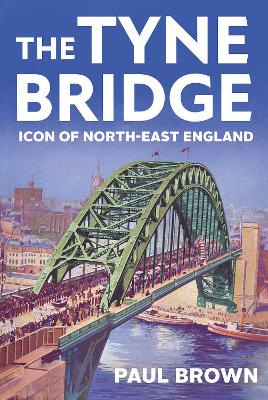The Tyne Bridge, opened in 1928 by King George V, is one of Britain’s most iconic structures, a Grade II* listed building. Linking Newcastle and Gateshead, this symbol of Tyneside and the region is also a monument to the Tyne’s industrial past. Paul Brown’s popular history explores what the bridge means to the people of North-East England, and its deep connection with their heritage.
Brown recounts the story of the bridge’s predecessors, from the Roman Pons Aelius–the first crossing over the Tyne–to the Victorian era. He then brings to life the individuals who built the modern bridge: Ralph...Read more
The Tyne Bridge, opened in 1928 by King George V, is one of Britain’s most iconic structures, a Grade II* listed building. Linking Newcastle and Gateshead, this symbol of Tyneside and the region is also a monument to the Tyne’s industrial past. Paul Brown’s popular history explores what the bridge means to the people of North-East England, and its deep connection with their heritage.
Brown recounts the story of the bridge’s predecessors, from the Roman Pons Aelius–the first crossing over the Tyne–to the Victorian era. He then brings to life the individuals who built the modern bridge: Ralph Freeman, the structural engineer who also designed the Sydney Harbour Bridge; Dorothy Buchanan, the first female member of the Institution of Civil Engineers, who produced drawings and calculations; John Carr, the boatman who bravely rescued workers from the Tyne on dozens of occasions; and the scaffolder Nathaniel Collins, the only man not to survive construction of the arch, who fell from the bridge just weeks before its completion.
This richly illustrated book charts the Tyne Bridge’s story right to the present, exploring how it remains a North-Eastern cultural emblem, in a region that has changed almost unrecognisably since its heyday in the late 1920s.
Brown recounts the story of the bridge’s predecessors, from the Roman Pons Aelius–the first crossing over the Tyne–to the Victorian era. He then brings to life the individuals who built the modern bridge: Ralph Freeman, the structural engineer who also designed the Sydney Harbour Bridge; Dorothy Buchanan, the first female member of the Institution of Civil Engineers, who produced drawings and calculations; John Carr, the boatman who bravely rescued workers from the Tyne on dozens of occasions; and the scaffolder Nathaniel Collins, the only man not to survive construction of the arch, who fell from the bridge just weeks before its completion.
This richly illustrated book charts the Tyne Bridge’s story right to the present, exploring how it remains a North-Eastern cultural emblem, in a region that has changed almost unrecognisably since its heyday in the late 1920s.
- ISBN13 9781787387935
- Publish Date 3 November 2022
- Publish Status Forthcoming
- Publish Country GB
- Imprint C Hurst & Co Publishers Ltd
- Format Hardcover
- Pages 288
- Language English
